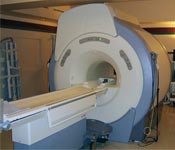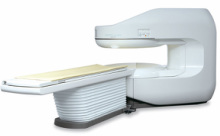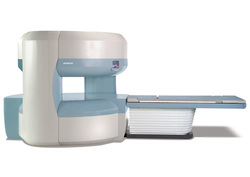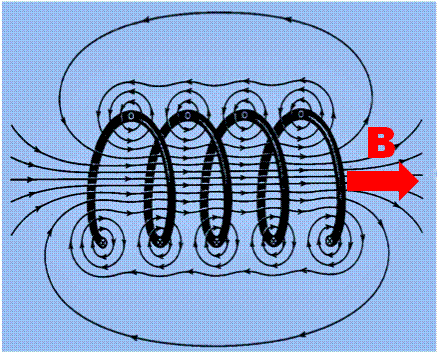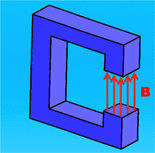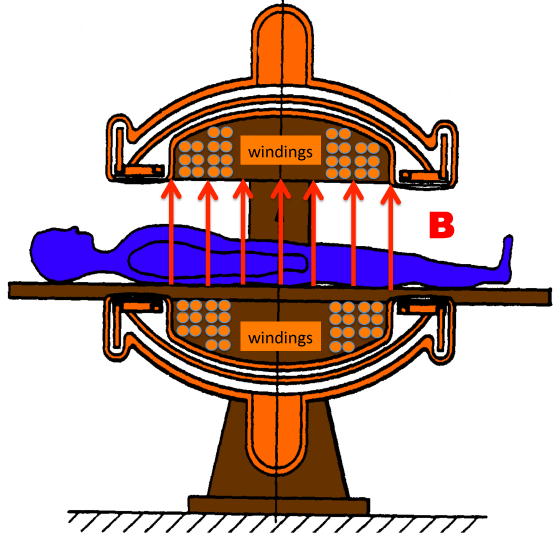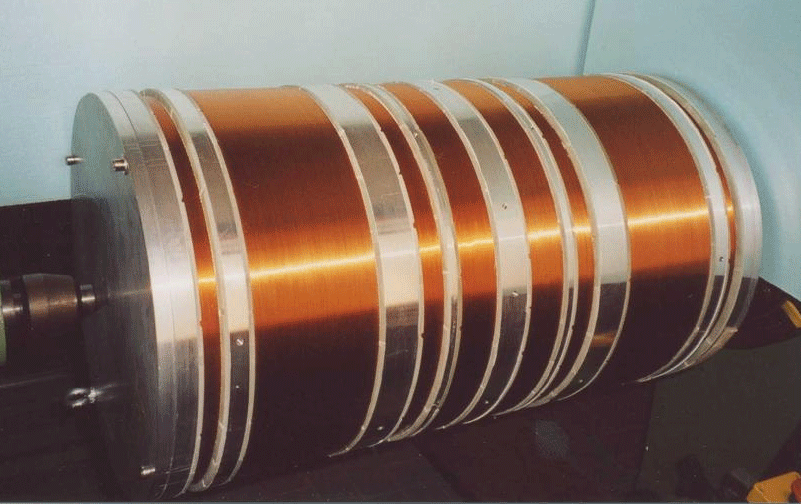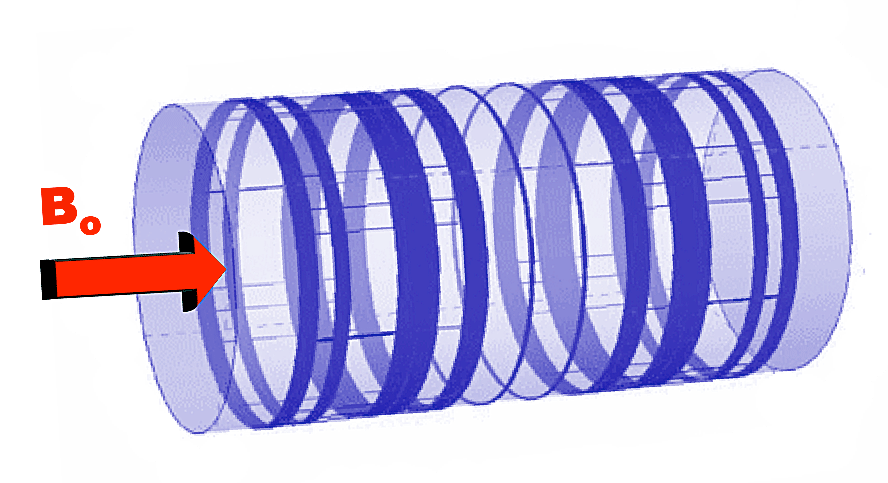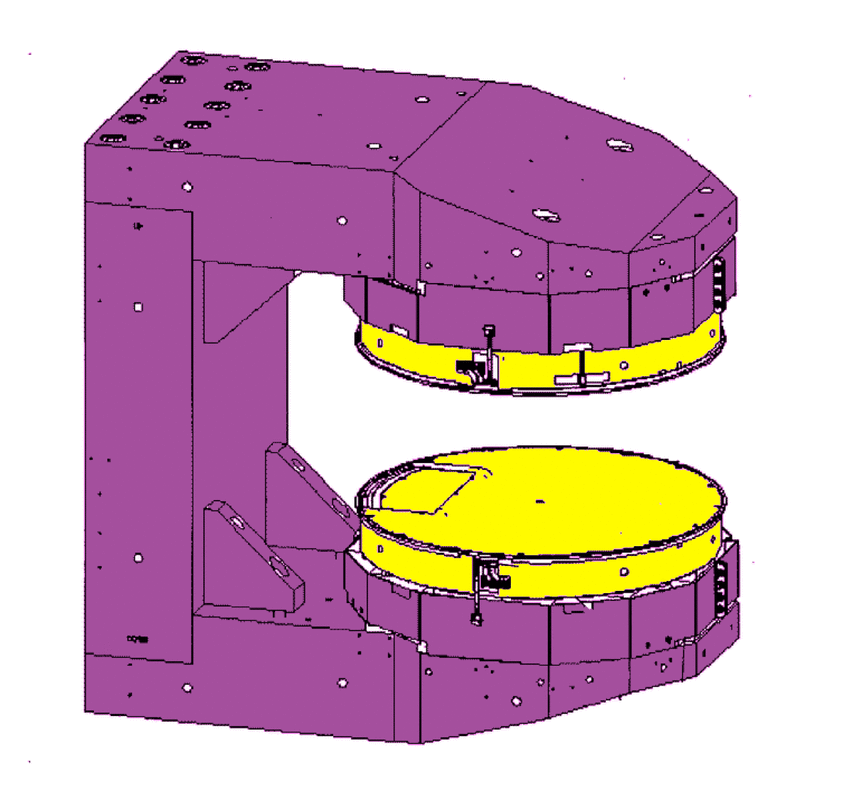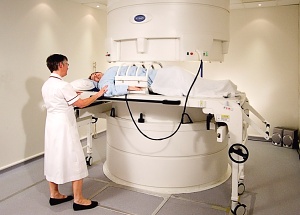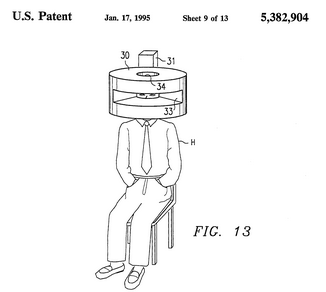MR scanners are broadly classified into closed- and open-bore systems. Over 90% of scanners world wide are of the closed-bore cylindrical design and generate their fields by passing current through a solenoid kept at superconducting temperatures. Open bore magnets contain an air gap between two magnetic poles. These may utilize permanent magnets or electromagnets.
|
Closed bore (cylindrical) configuration with superconducting solenoidal design. The coils are bathed in liquid helium allowing a stable, homogeneous field to be created, typically 1T and higher.
Most open bore scanners utilize permanent magnets in a C-shaped or horseshoe configuration. These operate at field strengths typically ranging from 0.064T to 1.0T. The third design is a dipolar electromagnet configuration with coils on either side of the patient. These coils can be superconductive or resistive and range from 0.5T to 1.2T. Very low field scanners utilize arrays of small permanent rare-earth magnets in a Hallbach configuration. This reduces fringe fields and permits a single-sided magnetic field. |
Advanced Discussion (show/hide)»
Additional notes on the closed bore (cylindrical) configuration. The design of cylindrical magnets is not quite as simple as pictured above. A single continuous solenoidal winding will only produce a completely homogenous central field if infinite in length. For coils truncated to the 2-3 meter range, a single solenoid would not provide a sufficiently uniform field for MR imaging. The homogeneity problem is solved by breaking up the main coil into 6-10 separate windings with gaps in between as shown below. This configuration maintains symmetry of the field along the z-axis (Bo direction), minimizes fringe fields at the ends of the scanner, and improves homogeneity centrally. There are, as expected, some minor fluctuations in field strength along the z-axis, with minimally higher fields directly under the bands and minimally lower fields within the gaps.
Additional notes on C-shaped configurations. Although it is tempting to think of the entire C-shaped structure being a solid permanent magnet, that is not actually the case. C-shaped open magnets are composed of a ferromagnetic yoke and pole pieces (shoes). The yoke itself is not magnetically saturated. Field generation is created by a pair of magnets located at the ends of the yoke on both sides of the air gap. For permanent magnet scanners, these pole pieces are often a set of neodymium-boron-iron magnetic blocks or disks. Resistive or superconducting electromagnets can also be used. In the latter case, the yoke is not a flux link but only serves to hold the superconducting magnets in exact alignment.
Other configurations. A variety of other related but interesting configurations exist. The FONAR 360°™ (below left) is no longer in production, but was a dipolar resistive electromagnet whose pole pieces protruded from the ceiling and the floor. There was no visible magnetic yoke as it was embedded the walls of the room, thus allowing 360° access to the patient. Fonar still produces an Upright MRI for weight-bearing studies that can be placed in other positions as well.
References
Overweg J. MRI main field magnets. Presented at ISMRM 2006. Click here for link.
Cosmos TC, Parizh M. Advances in whole-body MRI magnets. IEEE Trans ApplIed Superconductivity 2011: 21;2014-2019.
Overweg J. MRI main field magnets. Presented at ISMRM 2006. Click here for link.
Cosmos TC, Parizh M. Advances in whole-body MRI magnets. IEEE Trans ApplIed Superconductivity 2011: 21;2014-2019.
Related Questions
How many brands of scanners are there?
How many brands of scanners are there?

